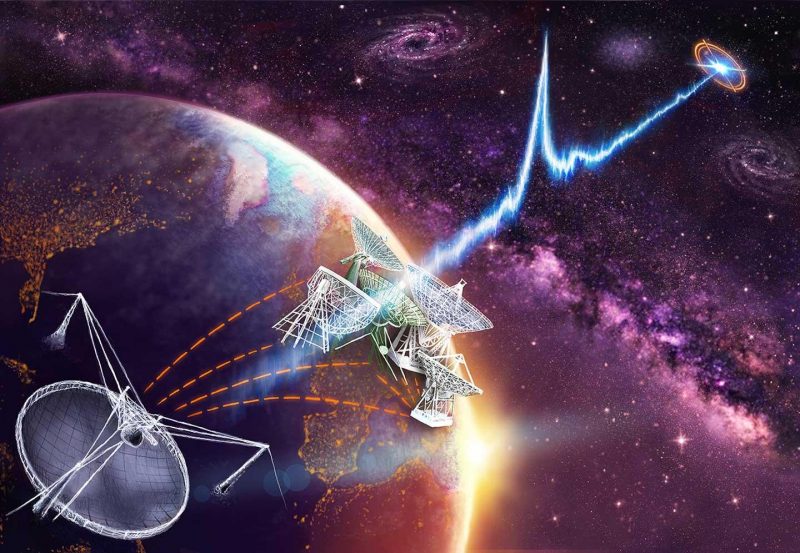Note4Students
From UPSC perspective, the following things are important :
Prelims level: Fast Radio Bursts (FRBs)
Mains level: Not Much

Researchers from a Canadian space observatory have been recording the periodic radio waves hitting Earth from a neighbouring galaxy from past few years. These radio waves are called Fast Radio Bursts (FRBs).
Fast Radio Bursts (FRBs)
- FRBs are super intense, millisecond-long bursts of radio waves produced by unidentified sources in the space.
- Their discovery in 2007 by American astronomer Duncan Lorimer led to the term ‘Lorimer Bursts’.
- Since then, just a few dozen similar events have been observed in data collected by radio telescopes around the world, building evidence that points to a variety of potential causes.
- Only a handful of emissions have been traced to specific areas of the sky, indicating sources in other galaxies.
- The flash of radio waves is incredibly bright if distant, comparable to the power released by hundreds of millions of suns in just a few milliseconds.
- This intensity suggests powerful objects like black holes and neutron stars could be involved.
- The events were once considered to be largely transient – they seemed to happen once, without obvious signs of a repeat emission. However, a number of such bursts have been identified since then.
Why are they significant?
- First noticed in 2018 by the Canadian observatory the waves have created ripples across the globe for one reason — they arrive in a pattern.
- This gave birth to theories that they could be from an alien civilization.
- Initially, it was believed that the collision of black holes or neutron stars triggers them.
- But the discovery of repeating FRBs debunked the theory of colliding objects.
Get an IAS/IPS ranker as your 1: 1 personal mentor for UPSC 2024

